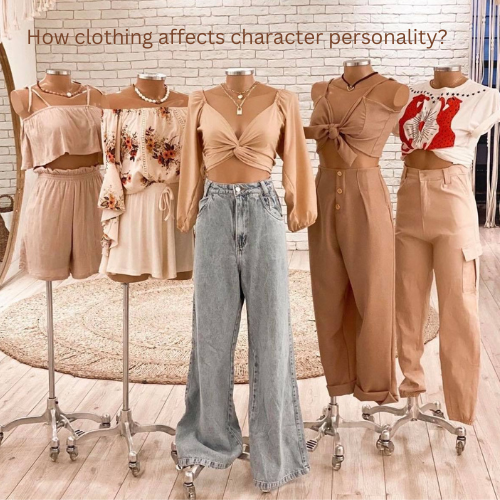Clothing plays a powerful role in shaping a character’s personality in storytelling, whether in literature, film, or even gaming. The way a character dresses can reflect their social status, personality traits, emotions, or even changes in their character.
“A character’s clothing is often the first silent introduction to their personality, signaling their confidence, insecurity, or sense of rebellion before they even speak.” The way a character dresses can reveal their internal state—whether they are meticulous and composed or chaotic and disheveled, their wardrobe often mirrors their inner world. Clothing choices serve as a character’s silent language, offering clues about their values, social standing, and how they perceive themselves within the world.

1.Character Development through Clothing:
~Evolution of Wardrobe: A character’s wardrobe may evolve as they grow. For example, a shy, insecure character might start off in conservative, muted tones and shift to more vibrant, daring outfits as they become more confident.
~Costume as Identity: In superhero genres, costumes serve as an extension of the character’s alter-ego or inner identity, marking a transformation between their everyday self and their heroic role.
2. Costume Design in Film/Television:
~Visual Storytelling: Films often use costume design to reflect a character’s internal world. Designers will intentionally select materials, textures, and silhouettes that align with a character’s journey.
~Iconic Character Costumes: Think of characters like James Bond, known for his impeccable suits, which convey elegance, control, and sophistication, or Indiana Jones, whose rugged clothes symbolize adventure and resourcefulness.
~Hero and Villain Contrast: How heroes and villains are often dressed to contrast one another. For instance, heroes may be in clean, fitted clothing symbolizing order and goodness, while villains wear darker, edgier styles that reflect chaos or danger.
3. Symbolism of Clothing:
~Uniforms and Roles: Uniforms can signify a character’s job or role in society (e.g., military, medical). A character in a uniform might be conforming to societal rules, or perhaps feeling restricted by them.
Clothing as an Extension of Self: Characters’ wardrobes often symbolize their core traits, with confident, expressive characters wearing bold, eye-catching clothing, while introverted or serious characters may prefer muted, minimalistic outfits.
“As we conclude our exploration of clothing and character personality, remember that each outfit carries meaning, weaving together the narrative threads that define who the characters are and what they represent.”

